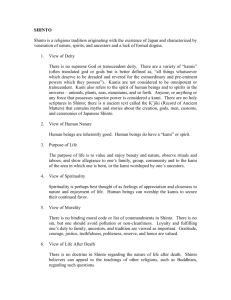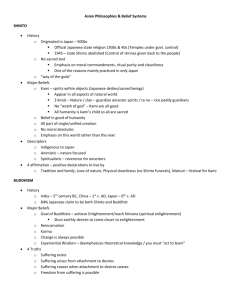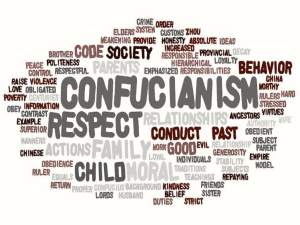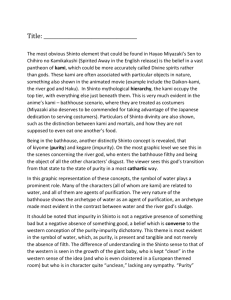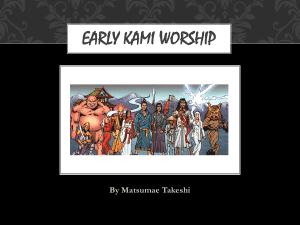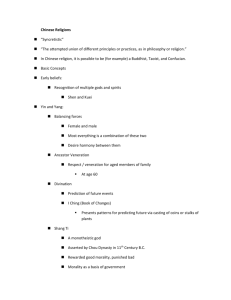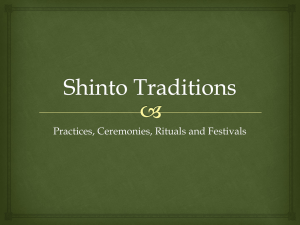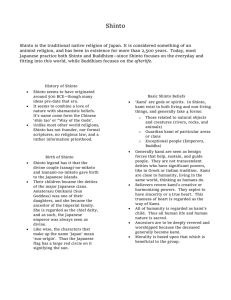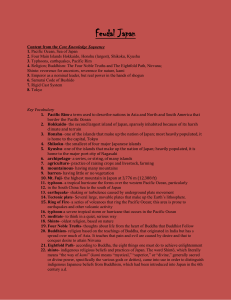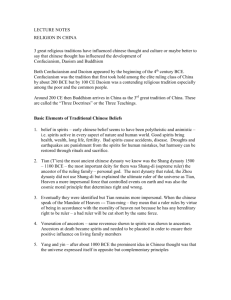Shinto Religion: Key Terms, Beliefs, and Impact
advertisement
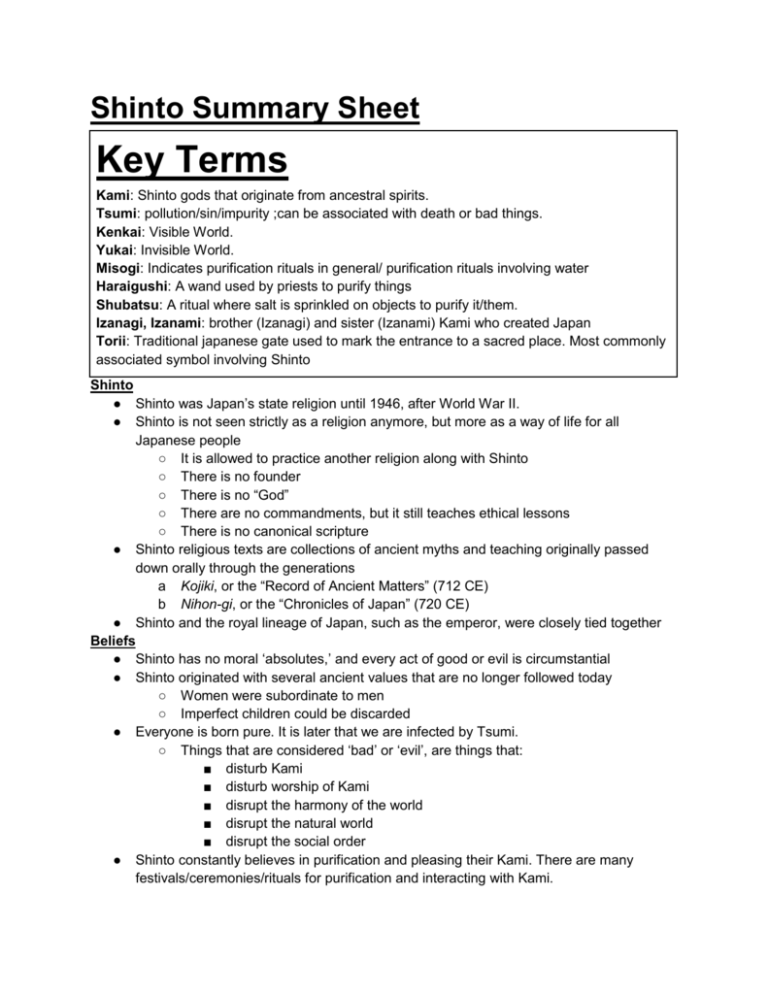
Shinto Summary Sheet Key Terms Kami: Shinto gods that originate from ancestral spirits. Tsumi: pollution/sin/impurity ;can be associated with death or bad things. Kenkai: Visible World. Yukai: Invisible World. Misogi: Indicates purification rituals in general/ purification rituals involving water Haraigushi: A wand used by priests to purify things Shubatsu: A ritual where salt is sprinkled on objects to purify it/them. Izanagi, Izanami: brother (Izanagi) and sister (Izanami) Kami who created Japan Torii: Traditional japanese gate used to mark the entrance to a sacred place. Most commonly associated symbol involving Shinto Shinto ● Shinto was Japan’s state religion until 1946, after World War II. ● Shinto is not seen strictly as a religion anymore, but more as a way of life for all Japanese people ○ It is allowed to practice another religion along with Shinto ○ There is no founder ○ There is no “God” ○ There are no commandments, but it still teaches ethical lessons ○ There is no canonical scripture ● Shinto religious texts are collections of ancient myths and teaching originally passed down orally through the generations a Kojiki, or the “Record of Ancient Matters” (712 CE) b Nihon-gi, or the “Chronicles of Japan” (720 CE) ● Shinto and the royal lineage of Japan, such as the emperor, were closely tied together Beliefs ● Shinto has no moral ‘absolutes,’ and every act of good or evil is circumstantial ● Shinto originated with several ancient values that are no longer followed today ○ Women were subordinate to men ○ Imperfect children could be discarded ● Everyone is born pure. It is later that we are infected by Tsumi. ○ Things that are considered ‘bad’ or ‘evil’, are things that: ■ disturb Kami ■ disturb worship of Kami ■ disrupt the harmony of the world ■ disrupt the natural world ■ disrupt the social order ● Shinto constantly believes in purification and pleasing their Kami. There are many festivals/ceremonies/rituals for purification and interacting with Kami. ○ ● Correct and longer performances of festivals/ceremonies/rituals takes priority over everything else that they believe. The longer it is, the more religious it is. Viewers are also considered participating in festivals/ceremonies/rituals. Death is seen as impure. Cemeteries are not near Shinto shrines, and Buddhists handle funerals. Faith Days ● In Shinto, there are days of worship for three age groups: newborns, children and adults ● Hatsumiyamairi is the day of worship for newborns, which takes place on the 32nd or 33rd day, depending if the child is male or female ● Shichigosan is the day of worship for children (aged 3-5 and 3-7 depending on gender), who are taken by their parents to pay respect to the kami ● Seijin Shiki happens once a year, where people who have turned 20 in the past year pay respects to the kami Kami ● Kami are created the same way as humans ● Humans and Kami live in the same dimension. Kamis are in the Yukai, and humans are in the Kenkai. ● Izanagi (M) and Izanami (F) are the first two Kami who formed out of chaos ○ Izanagi and Izanami were brother and sister ● Izanagi and Izanami formed the island of Japan by stabbing a jeweled spear into the ocean ● Izanagi and Izanami were the first two who explored sexual activities and had many children that were Kami, such as Amaterasu and Susanoo ● Amaterasu is the Sun Goddess ● Susanoo is the Kami of Wind and Storms Impact ● Shinto has impacted Japanese culture and the perception of Japan despite the fact that it has not been Japan’s state religion since 1946 ● Many anime and manga borrow from the Shinto religion ● Kami and the Yukai are often used in anime and manga ● Nowadays, Japan is somewhat stereotyped in western culture due to the impact of Shinto
